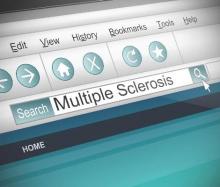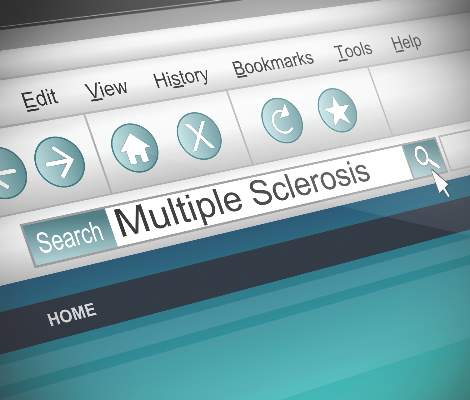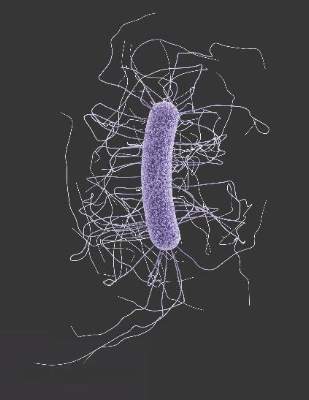User login
Rituximab bests fingolimod in MS patients switching from natalizumab
For patients with relapsing-remitting multiple sclerosis (RRMS) switching to other therapies due to positive JC virus serology, treatment with rituximab resulted in a lower rate of clinical relapse as compared with fingolimod in a retrospective outcomes study of registry data from three Swedish MS centers, according to a report published online March 31 in Annals of Neurology.
Although natalizumab (Tysabri) is approved for the treatment of highly active RRMS, its long-term use can increase the risk of developing progressive multifocal leukoencephalopathy. Because this is a serious and potentially lethal condition associated with opportunistic brain infection with the JC virus, those patients testing positive for JC virus antibodies may require a switch to an alternative treatment, such as fingolimod (Gilenya), or off-label use of rituximab (Rituxan). The efficacy, safety, and tolerability associated with switching to either of these alternative therapies were compared by Peter Alping of the department of clinical neuroscience, Karolinska Institutet, Stockholm, and his associates (Ann Neurol. 2016 Mar 31. doi: 10.1002/ana.24651).
Of the 256 patients included in the study, 142 (55%) were switched to fingolimod. The efficacy outcomes comparison showed a statistically significant difference in favor of rituximab, with which 2% of patients had a clinical relapse in the first 1.5 years of treatment after natalizumab cessation as opposed to 18% for fingolimod. This corresponded to an annual relapse rate of 0.02 and 0.16, respectively. Additionally, a review of patients’ contrast-enhancing lesions on MRI scans after at least 3 months of treatment indicated that disease progression was detected less frequently in patients switched to rituximab (1%) as opposed to those switched to fingolimod (16%).
The safety and tolerability data also indicated more favorable results for those patients switched to rituximab. For example, a significantly lower rate of adverse events was noted in the rituximab group (5%) when compared with the fingolimod group (21%). Similarly, a lower rate of treatment discontinuation was observed for those switched to rituximab (2%) when compared with those switched to fingolimod (28%).
The statistically significant differences found in the efficacy, safety, and tolerability data persisted even after adjusting for possible confounding factors including patient age, sex, disability status, time on natalizumab, washout time, follow-up time, and study center. Despite the differences noted in the safety findings, the authors said that both treatments seemed to be safe in general.
In most cases, natalizumab had been given 300 mg IV every 4 weeks. Fingolimod was given orally 0.5 mg once daily. Nearly all patients who received rituximab got a single IV infusion of 500 or 1,000 mg every 6 months, but in some cases the first infusion had been repeated after 2 weeks.
In the absence of formal randomized clinical trial data, the authors said that these findings support the use of rituximab over fingolimod in this particular population of MS patients.
This study was supported by the Swedish Medical Research council and the Stockholm County. First author Peter Alping declared no competing interests; several of his associates reported ties to numerous industry sources.
For patients with relapsing-remitting multiple sclerosis (RRMS) switching to other therapies due to positive JC virus serology, treatment with rituximab resulted in a lower rate of clinical relapse as compared with fingolimod in a retrospective outcomes study of registry data from three Swedish MS centers, according to a report published online March 31 in Annals of Neurology.
Although natalizumab (Tysabri) is approved for the treatment of highly active RRMS, its long-term use can increase the risk of developing progressive multifocal leukoencephalopathy. Because this is a serious and potentially lethal condition associated with opportunistic brain infection with the JC virus, those patients testing positive for JC virus antibodies may require a switch to an alternative treatment, such as fingolimod (Gilenya), or off-label use of rituximab (Rituxan). The efficacy, safety, and tolerability associated with switching to either of these alternative therapies were compared by Peter Alping of the department of clinical neuroscience, Karolinska Institutet, Stockholm, and his associates (Ann Neurol. 2016 Mar 31. doi: 10.1002/ana.24651).
Of the 256 patients included in the study, 142 (55%) were switched to fingolimod. The efficacy outcomes comparison showed a statistically significant difference in favor of rituximab, with which 2% of patients had a clinical relapse in the first 1.5 years of treatment after natalizumab cessation as opposed to 18% for fingolimod. This corresponded to an annual relapse rate of 0.02 and 0.16, respectively. Additionally, a review of patients’ contrast-enhancing lesions on MRI scans after at least 3 months of treatment indicated that disease progression was detected less frequently in patients switched to rituximab (1%) as opposed to those switched to fingolimod (16%).
The safety and tolerability data also indicated more favorable results for those patients switched to rituximab. For example, a significantly lower rate of adverse events was noted in the rituximab group (5%) when compared with the fingolimod group (21%). Similarly, a lower rate of treatment discontinuation was observed for those switched to rituximab (2%) when compared with those switched to fingolimod (28%).
The statistically significant differences found in the efficacy, safety, and tolerability data persisted even after adjusting for possible confounding factors including patient age, sex, disability status, time on natalizumab, washout time, follow-up time, and study center. Despite the differences noted in the safety findings, the authors said that both treatments seemed to be safe in general.
In most cases, natalizumab had been given 300 mg IV every 4 weeks. Fingolimod was given orally 0.5 mg once daily. Nearly all patients who received rituximab got a single IV infusion of 500 or 1,000 mg every 6 months, but in some cases the first infusion had been repeated after 2 weeks.
In the absence of formal randomized clinical trial data, the authors said that these findings support the use of rituximab over fingolimod in this particular population of MS patients.
This study was supported by the Swedish Medical Research council and the Stockholm County. First author Peter Alping declared no competing interests; several of his associates reported ties to numerous industry sources.
For patients with relapsing-remitting multiple sclerosis (RRMS) switching to other therapies due to positive JC virus serology, treatment with rituximab resulted in a lower rate of clinical relapse as compared with fingolimod in a retrospective outcomes study of registry data from three Swedish MS centers, according to a report published online March 31 in Annals of Neurology.
Although natalizumab (Tysabri) is approved for the treatment of highly active RRMS, its long-term use can increase the risk of developing progressive multifocal leukoencephalopathy. Because this is a serious and potentially lethal condition associated with opportunistic brain infection with the JC virus, those patients testing positive for JC virus antibodies may require a switch to an alternative treatment, such as fingolimod (Gilenya), or off-label use of rituximab (Rituxan). The efficacy, safety, and tolerability associated with switching to either of these alternative therapies were compared by Peter Alping of the department of clinical neuroscience, Karolinska Institutet, Stockholm, and his associates (Ann Neurol. 2016 Mar 31. doi: 10.1002/ana.24651).
Of the 256 patients included in the study, 142 (55%) were switched to fingolimod. The efficacy outcomes comparison showed a statistically significant difference in favor of rituximab, with which 2% of patients had a clinical relapse in the first 1.5 years of treatment after natalizumab cessation as opposed to 18% for fingolimod. This corresponded to an annual relapse rate of 0.02 and 0.16, respectively. Additionally, a review of patients’ contrast-enhancing lesions on MRI scans after at least 3 months of treatment indicated that disease progression was detected less frequently in patients switched to rituximab (1%) as opposed to those switched to fingolimod (16%).
The safety and tolerability data also indicated more favorable results for those patients switched to rituximab. For example, a significantly lower rate of adverse events was noted in the rituximab group (5%) when compared with the fingolimod group (21%). Similarly, a lower rate of treatment discontinuation was observed for those switched to rituximab (2%) when compared with those switched to fingolimod (28%).
The statistically significant differences found in the efficacy, safety, and tolerability data persisted even after adjusting for possible confounding factors including patient age, sex, disability status, time on natalizumab, washout time, follow-up time, and study center. Despite the differences noted in the safety findings, the authors said that both treatments seemed to be safe in general.
In most cases, natalizumab had been given 300 mg IV every 4 weeks. Fingolimod was given orally 0.5 mg once daily. Nearly all patients who received rituximab got a single IV infusion of 500 or 1,000 mg every 6 months, but in some cases the first infusion had been repeated after 2 weeks.
In the absence of formal randomized clinical trial data, the authors said that these findings support the use of rituximab over fingolimod in this particular population of MS patients.
This study was supported by the Swedish Medical Research council and the Stockholm County. First author Peter Alping declared no competing interests; several of his associates reported ties to numerous industry sources.
FROM ANNALS OF NEUROLOGY
Key clinical point: Patients with RRMS switching from natalizumab to rituximab due to JC virus antibody positivity achieved better efficacy outcomes than did those switched to fingolimod.
Major finding: A significantly higher percentage of study participants experienced clinical relapse when switched to fingolimod (18%) as opposed to rituximab (2%) within 1.5 years of natalizumab cessation.
Data source: A retrospective outcomes study of registry data from three Swedish MS centers involving 256 JC virus antibody–positive RRMS patients who had switched therapies.
Disclosures: This study was supported by the Swedish Medical Research council and the Stockholm County. First author Peter Alping declared no competing interests; several of his associates reported ties to numerous industry sources.
Clostridium difficile management guidance updated by AHRQ
Clinical trial data support the use of vancomycin over metronidazole for those with initial Clostridium difficile infection (CDI), and fidaxomicin over vancomycin for the prevention of recurrent infection, according to a newly-released update of the 2011 Agency for Healthcare Research and Quality Comparative Effectiveness Review.
In contrast, data were considered to be weak though consistent in their pattern of efficacy regarding the use of fecal microbiota transplantation and lactobacillus probiotics to restore the biodiversity of the gut microbiota and improve patient resistance to CDI or its recurrence, according to Mary Butler, Ph.D., of the division of health policy and management, University of Minnesota School of Public Health, and her associates.
Since publication of the original review, data have been reported supporting the effectiveness of new diagnostic tests, as well as the comparative efficacy of particular agents over others in different stages of the illness. Dr. Butler and six additional experts in the fields of health policy and management and infectious disease reviewed published literature from 2010 through 2015 focusing on a limited number of quality improvement opportunities identified as most important to improve patient care, adding seven new findings and updating six findings from the original review.
To update the 2011 review, the authors conducted a literature review covering the years 2010 through 2015. Of the 7,416 individual citations identified using this search methodology, 252 were selected for further scrutiny. Of these, 37 diagnostic studies and 56 studies evaluating prevention or treatment interventions were identified and assessed from a pool of 252 eligible studies selected from 7,416 citations regarding early diagnosis, prevention, and treatment of Clostridium difficile.
Dr. Butler and her colleagues noted that the four years between the original review and the update were marked by an overall increase in research regarding both diagnosis and interventions. Aside from the aforementioned interventional updates, four diagnostic methodologies without recommendations in the original review (nucleic acid amplification tests, enzyme tests for toxins A/B, assay tests for glutamate dehydrogenase, and test algorithms) are all included in the update, with high, moderate, and low levels of evidence, respectively.
Regarding preventive strategies, the design and reporting of new studies published since the release of the original review were considered to have shown improvement; however, only weak evidence was found for effectiveness in reducing the incidence of CDI.
The updated management review has been published online at www.effectivehealthcare.ahrq.gov/reports/final.cfm (AHRQ Publication No. 16-EHC012-EF. March 2016).
The Agency for Healthcare Research and Quality funded the update. None of the investigators reported any affiliations or financial involvements that would have conflicted with the material presented in this report.
Clinical trial data support the use of vancomycin over metronidazole for those with initial Clostridium difficile infection (CDI), and fidaxomicin over vancomycin for the prevention of recurrent infection, according to a newly-released update of the 2011 Agency for Healthcare Research and Quality Comparative Effectiveness Review.
In contrast, data were considered to be weak though consistent in their pattern of efficacy regarding the use of fecal microbiota transplantation and lactobacillus probiotics to restore the biodiversity of the gut microbiota and improve patient resistance to CDI or its recurrence, according to Mary Butler, Ph.D., of the division of health policy and management, University of Minnesota School of Public Health, and her associates.
Since publication of the original review, data have been reported supporting the effectiveness of new diagnostic tests, as well as the comparative efficacy of particular agents over others in different stages of the illness. Dr. Butler and six additional experts in the fields of health policy and management and infectious disease reviewed published literature from 2010 through 2015 focusing on a limited number of quality improvement opportunities identified as most important to improve patient care, adding seven new findings and updating six findings from the original review.
To update the 2011 review, the authors conducted a literature review covering the years 2010 through 2015. Of the 7,416 individual citations identified using this search methodology, 252 were selected for further scrutiny. Of these, 37 diagnostic studies and 56 studies evaluating prevention or treatment interventions were identified and assessed from a pool of 252 eligible studies selected from 7,416 citations regarding early diagnosis, prevention, and treatment of Clostridium difficile.
Dr. Butler and her colleagues noted that the four years between the original review and the update were marked by an overall increase in research regarding both diagnosis and interventions. Aside from the aforementioned interventional updates, four diagnostic methodologies without recommendations in the original review (nucleic acid amplification tests, enzyme tests for toxins A/B, assay tests for glutamate dehydrogenase, and test algorithms) are all included in the update, with high, moderate, and low levels of evidence, respectively.
Regarding preventive strategies, the design and reporting of new studies published since the release of the original review were considered to have shown improvement; however, only weak evidence was found for effectiveness in reducing the incidence of CDI.
The updated management review has been published online at www.effectivehealthcare.ahrq.gov/reports/final.cfm (AHRQ Publication No. 16-EHC012-EF. March 2016).
The Agency for Healthcare Research and Quality funded the update. None of the investigators reported any affiliations or financial involvements that would have conflicted with the material presented in this report.
Clinical trial data support the use of vancomycin over metronidazole for those with initial Clostridium difficile infection (CDI), and fidaxomicin over vancomycin for the prevention of recurrent infection, according to a newly-released update of the 2011 Agency for Healthcare Research and Quality Comparative Effectiveness Review.
In contrast, data were considered to be weak though consistent in their pattern of efficacy regarding the use of fecal microbiota transplantation and lactobacillus probiotics to restore the biodiversity of the gut microbiota and improve patient resistance to CDI or its recurrence, according to Mary Butler, Ph.D., of the division of health policy and management, University of Minnesota School of Public Health, and her associates.
Since publication of the original review, data have been reported supporting the effectiveness of new diagnostic tests, as well as the comparative efficacy of particular agents over others in different stages of the illness. Dr. Butler and six additional experts in the fields of health policy and management and infectious disease reviewed published literature from 2010 through 2015 focusing on a limited number of quality improvement opportunities identified as most important to improve patient care, adding seven new findings and updating six findings from the original review.
To update the 2011 review, the authors conducted a literature review covering the years 2010 through 2015. Of the 7,416 individual citations identified using this search methodology, 252 were selected for further scrutiny. Of these, 37 diagnostic studies and 56 studies evaluating prevention or treatment interventions were identified and assessed from a pool of 252 eligible studies selected from 7,416 citations regarding early diagnosis, prevention, and treatment of Clostridium difficile.
Dr. Butler and her colleagues noted that the four years between the original review and the update were marked by an overall increase in research regarding both diagnosis and interventions. Aside from the aforementioned interventional updates, four diagnostic methodologies without recommendations in the original review (nucleic acid amplification tests, enzyme tests for toxins A/B, assay tests for glutamate dehydrogenase, and test algorithms) are all included in the update, with high, moderate, and low levels of evidence, respectively.
Regarding preventive strategies, the design and reporting of new studies published since the release of the original review were considered to have shown improvement; however, only weak evidence was found for effectiveness in reducing the incidence of CDI.
The updated management review has been published online at www.effectivehealthcare.ahrq.gov/reports/final.cfm (AHRQ Publication No. 16-EHC012-EF. March 2016).
The Agency for Healthcare Research and Quality funded the update. None of the investigators reported any affiliations or financial involvements that would have conflicted with the material presented in this report.



